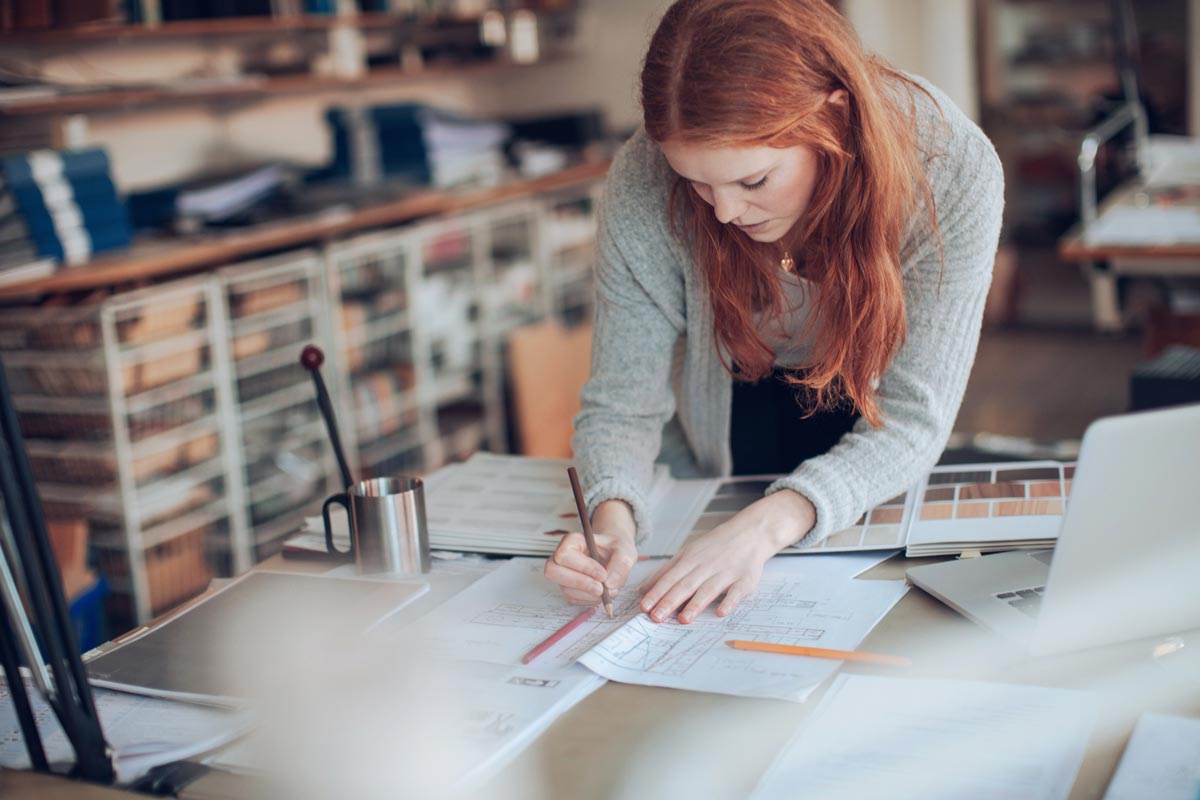Architect Portfolio Tips for Making an Impact in the Industry
Architect Portfolio Tips for Making an Impact in the Industry
Blog Article
The Role of Sustainability and Technology in Modern Architect Practices
Sustainability and innovation are reshaping modern style in methods you might not expect. By embracing eco-friendly materials and wise developments, architects are not simply developing buildings; they're crafting settings that boost our lifestyle. This shift isn't almost aesthetics or capability; it's concerning developing an accountable approach to our earth's future. What's driving this improvement, and how can these changes effect your community?
The Value of Sustainable Design
Lasting architecture is crucial not simply for the atmosphere but also for boosting our quality of life. When you accept lasting design, you're not simply minimizing your carbon footprint; you're creating areas that advertise health and well-being. Imagine living in a home that utilizes natural light, enhances air high quality, and lowers energy expenses. You'll really feel more linked and comfy to nature.
Furthermore, lasting design often results in stronger communities. When buildings are made with environmentally friendly practices, they can influence others to do the same, fostering a society of sustainability. You'll notice increased residential or commercial property values and a higher sense of pride in your surroundings.
Finally, by focusing on sustainability, you're buying the future. You're making certain that future generations take pleasure in a healthier planet and vibrant areas. So, when you consider your next task, consider just how sustainable design can boost your life and those around you.
Ingenious Materials Transforming Building Practices
As you discover innovative products in design, you'll discover that biodegradable building and construction materials are improving exactly how we think of sustainability. Recycled content technologies are giving new life to waste, while clever product technologies enhance constructing efficiency. These developments not just advertise eco-friendliness however also push the limits of layout.
Naturally Degradable Construction Materials
While traditional building materials commonly add to ecological degradation, naturally degradable construction products are arising as a feasible option that changes structure techniques. By integrating naturally degradable choices into your designs, you're not simply improving visual appeal; you're likewise making a favorable impact on the planet. As you adjust to these cutting-edge products, you'll find that they use durability and versatility, enabling you to create structures that straighten with contemporary worths of sustainability and obligation.
Recycled Web Content Innovations
In recent times, innovative products with high recycled material have changed building techniques, providing architects amazing new choices - Architect. You can currently integrate materials like recycled steel, which not only reduces waste however also boasts excellent stamina. Recycled glass is one more wonderful selection, supplying aesthetic appeal while lessening ecological influence

Smart Material Technologies
Smart product technologies are reshaping the means you consider building techniques, offering vibrant remedies that adapt to transforming conditions. These cutting-edge materials, such as self-healing concrete and thermochromic glass, boost building efficiency and sustainability. Imagine frameworks that can readjust to temperature modifications or fix themselves when harmed-- these improvements are no much longer simply ideas. By integrating clever products, you can create energy-efficient designs that reply to their environment, minimizing overall energy intake. The ability to adapt and check in real-time streamlines maintenance and prolongs the lifespan of buildings. As you welcome these modern technologies, you're not just introducing; you're adding to a much more sustainable future in architecture, combining functionality with ecological obligation.
The Combination of Smart Technologies in Design
As innovation develops, incorporating smart options into architectural layout comes to be crucial for producing effective and sustainable spaces. You can integrate smart modern technologies like building monitoring systems, which optimize power use and improve owner convenience. Sensing units can monitor ecological problems, changing lighting and temperature automatically based upon real-time data. This versatility not only improves customer experience however additionally decreases power intake.
Incorporating Web of Things (IoT) devices enables smooth interaction amongst different building systems, enabling you to make data-driven decisions that boost capability. Smart materials that react to ecological adjustments can better improve your layout, offering dynamic services to ever-changing conditions.
Energy Effectiveness and Renewable Resource Solutions
While numerous designers concentrate on aesthetic appeals, prioritizing energy effectiveness and renewable resource remedies is important for sustainable design. You can begin by including passive solar style, which optimizes all-natural light and heat, reducing reliance on synthetic illumination and furnace. Use high-performance insulation and energy-efficient home windows to minimize power loss.
Don't neglect regarding renewable resource systems-- set up photovoltaic panels or wind generators to generate clean power on-site. You can additionally think about incorporating geothermal heating and cooling systems for a much more sustainable temperature policy.
By selecting energy-efficient appliances and lighting, you'll not just minimize energy consumption however additionally reduced operational prices for building residents.
Integrating these principles right into your styles not only benefits the setting but also enhances the structure's allure and value. Ultimately, your commitment to energy efficiency and renewable power will certainly set your jobs apart in an open market.
Water Conservation Strategies in Modern Design
Integrating water conservation methods right into modern architecture is crucial for developing sustainable structures that lessen environmental influence. You can accomplish this by incorporating rainwater harvesting systems, which gather and save rainfall for watering and non-potable uses. Carrying out low-flow components and wise watering systems likewise lowers water usage, guaranteeing effective use throughout the structure.
Take into consideration using drought-resistant landscape design, which needs much less water and advertises biodiversity. Integrating permeable paving materials permits rainwater to penetrate the ground, minimizing drainage and charging groundwater supplies.
Additionally, mounting greywater recycling systems can repurpose water from sinks and showers for commode flushing or irrigation, more preserving sources.
The Influence of Biophilic Layout on Health
Biophilic design brings nature inside your home, and you'll discover its positive effects on your health and joy. By boosting interior air high quality and linking you with all-natural aspects, these areas can change your everyday experience. Let's discover how integrating these attributes can increase your overall health.
Nature's Impact on Wellness
When you integrate components get more info of nature into your environments, it can considerably boost your physical and mental wellness. Biophilic layout, which emphasizes natural light, plants, and organic products, fosters a sense of connection to the outdoors. Welcoming biophilic layout is an action toward a much healthier way of living.
Enhancing Indoor Air Quality
While many individuals focus on appearances and performance in style, boosting indoor air top quality plays an important function in your general health. Poor air high quality can result in wellness concerns like frustrations, fatigue, and respiratory system problems. By integrating biophilic design aspects, you can improve air top quality normally. Plants, as an example, not only enhance your area yet likewise filter contaminants and boost oxygen degrees. Utilizing materials with reduced volatile natural compounds (VOCs) better adds to a much healthier indoor environment. Furthermore, optimizing natural air flow helps minimize interior pollutants. Prioritizing these elements in your layout will certainly not only elevate your area yet additionally advertise a feeling of calm and health. Ultimately, a concentrate on air high quality is crucial for a healthy and balanced and sustainable living atmosphere.
Link With Natural Elements
When you get in touch with all-natural aspects in your area, you not only boost its aesthetic appeal however also greatly boost your wellness. Biophilic design encourages you to incorporate functions like plants, all-natural light, and organic products. These aspects develop a calming ambience, lowering tension and anxiety. Study reveals that being around nature can improve your state of mind and cognitive function, aiding you feel extra effective and focused. When you welcome the outdoors inside, you may notice far better air quality and increased convenience. Easy adjustments, like adding a living wall or big windows, can greatly impact your experience (Architect). Eventually, integrating nature into your setting leads you to a healthier, happier way of living, cultivating a deeper link to the globe around you.
Future Patterns in Sustainable Architectural Practices
As the globe encounters pushing ecological difficulties, architects are progressively embracing ingenious strategies to sustainability that redefine just how we design and build. You'll see a rise in biophilic design, incorporating nature into city areas to boost health and decrease energy usage. Smart innovations, like AI and IoT, are streamlining energy administration in structures, optimizing source use, and lessening waste.
Additionally, modular building is acquiring traction, enabling faster, more effective structure procedures while lowering environmental influence. Making use of sustainable materials, such as redeemed wood and recycled steels, is becoming typical method. As you discover these fads, expect a change toward circular layout, highlighting the lifecycle of materials and advertising reuse and recycling.
These forward-thinking strategies not only address eco-friendly problems however additionally develop much healthier, much more durable areas. By staying notified about these fads, you can help form a lasting future in style.
Frequently Asked Questions
Exactly How Can Sustainability Affect Task Budget Plans and costs?
Sustainability can substantially affect task prices and spending plans. You could find that preliminary financial investments in eco-friendly materials or innovations cause long-lasting financial savings with energy effectiveness, decreased waste, and prospective federal government incentives, ultimately stabilizing the general costs.
What Accreditations Exist for Lasting Architecture?
You'll locate numerous qualifications for lasting design, consisting of LEED, BREEAM, and the Living Structure Obstacle. These accreditations help you show your commitment to sustainability and can enhance your task's integrity and attract clients.
Just How Does Local Culture Influence Sustainable Style?
Regional culture shapes sustainable design by showing area materials, worths, and practices. You'll find that integrating click here local visual appeals and practices not just values heritage yet also boosts the performance and acceptance of your architectural tasks.
What Function Does Client Education And Learning Play in Sustainable Practices?
Client education and learning's vital for advertising sustainable methods. When you educate clients about advantages, prices, and environmental effects, you equip Architect them to make educated decisions, cultivating a collaborative approach that enhances the task's overall sustainability.

How Can Architects Gauge the Success of Sustainability Efforts?
You can determine the success of sustainability initiatives by tracking power consumption, examining product efficiency, and event responses from clients. Routine audits and comparisons against criteria will aid you improve your strategies and showcase renovations efficiently.
By integrating wise materials, you can develop energy-efficient layouts that react to their setting, decreasing total energy usage.While several designers focus on appearances, focusing on power performance and sustainable power services is necessary for lasting style. Biophilic design, which highlights natural light, plants, and organic products, cultivates a sense of link to the outdoors. Biophilic layout urges you to incorporate attributes like plants, all-natural light, and natural products. As you discover these patterns, anticipate a shift towards circular style, stressing the lifecycle of products and promoting reuse and recycling.
Report this page